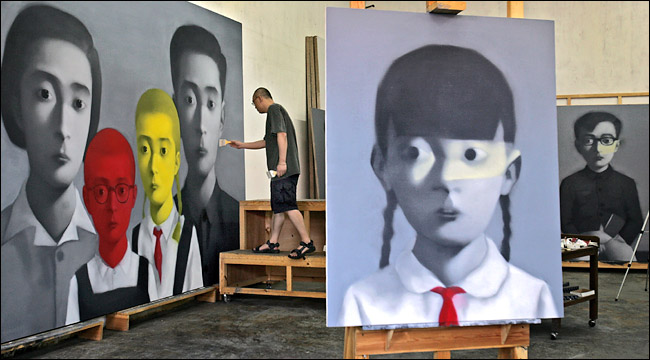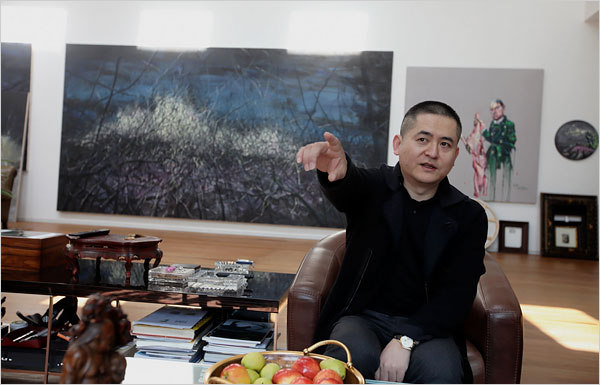Every artist will probably encounter the below scenario in their lifetime.
“Can you paint me something?”
“Can you give me one of your works for free?”
“Why not? You just take a brush and paint!”
In reality however, do you know exactly how much does a piece of artwork cost?

Time = Cost
If an artist paints for 12 hours daily for 265 days in a year, the amount of time he spend on his art will be 4380 hours.
However, in order for a beginner to blossom into an established artist whom reachs a certain level of skilfulness, he needs to put in at least a few decades of effort and hard work. In fact, some artists may paint for a lifetime and still remain unknown and invisible in the market….
An artwork has to be ‘nurtured’. Without a strong foundation and 10, 20 years of life experience and training, it is virtually impossible to produce truly high quality artworks. When an artist agrees to your request to paint something for free, beneath it are nights of sleeplessness and effort.
Some people have the perspective that prices of art are ridiculously jerked up. Any painting can be sold for thousands of dollars. Lets do a quick calculation then. Take an oil painting for example, a piece of canvas costs around twenty to thirty dollars for a foot’s length. The better quality types cost a few hundred dollars or even higher. The price of oil paints are around 300 – 500 dollars. A smaller size work takes around a few days to finish, whereas a large piece of work takes around two weeks or even a few months to fully complete.
The average income of a person is around 100 – 150 dollars per day. Without calculating the foundation of the ‘cost of training’ but simply counting in the ‘material cost’ that an artist spends on, i’s not surprising that it takes a few thousand dollars to complete a painting. The bigger the size, the more time consuming and more cost occurs. A lot of times, a high quality painting usually takes at least 2 weeks to complete and the completion has to be a perfect, ‘one time’ effort. If any mistakes were made, the touchups and changes will naturally result in additional costs. With these calculations in mind, a lot of times the price of an artwork is perfectly acceptable.
In order to become a matured & skilled artist, it takes a large amount of practice to achieve it. It is commonly said that a good piece of art is made up of thousands of paper, effort and handwork.
Why do some artists produce artworks in very limited quantity?
As the skill & artistic level of an artist increases, he will have higher expectations. He becomes even more disciplined and careful with his creations, and any ‘bad’ works are discarded to be responsible to himself and his collectors.
Earlier on, we did a mathematical calculation. Now, we will do another. The average person starts working from the age of 20 years old. A few years into his work, with an income of around 5000 dollars per month, he earns 60000 dollars a year. 30 years later, he earns 1800000 dollars.

An artist starts creating artworks at the age of 20 and perhaps reach maturity only 30 years later. But even then, sales of his works are not guaranteed if he still have not obtained fame. So if he paints 5 – 8 works per month and the costs of materials are capped at 500 dollars each month, that makes it 6000 dollars a year. So in 30 years, not only did he not receive any profit but he had to make a loss of 216000 dollars. All in all, 20, 30 years of hard practice are often, without an income.
Life = Cost
A lot of artists refer to their art creations as their children. The amount of time and effort spent are probably even more then months of actual pregnancy. Some people spend a few decades, whereas others spend a lifetime of energy as their capital. They practiced continuously, day after day, night after night. In fact, to paint one whole day could potentially be more tiring than doing physical activities. The art buyer spends money, but the artist spends his life. When everyone else is asleep, a lot of times it is when an artist will start to work on his creations to get away from everyday duties and to avoid being interrupted. It is truly a mental and physical challenge.
On top of that, a matured artist has to absorb and learn new things daily to keep his mind active and his visions fresh. This is one of the reasons why a lot of artists’ works are only given due credit after their death, as their thoughts and expressions are very avant garde. As modern society progresses and information becomes readily available through the internet, artists have to put in even more energy to cultivate their acute sense of sniffing out new experiences. An artists’s thought process, his sensitivity towards life experiences and his accumulated technical ability are all in all, priceless.
For an artist, his art is his life. And life, is the most expensive cost.
An artist’s labor is an intense form of alternative labor. The result brings joy to the viewer, but whats hidden behind are often a complicated and hardship filled process plus the risk of having zero return.
As artists often have very different and avant grade visions, some of them experienced social rejection, loneliness and emotional stress as they are often easily misunderstood. These external factors can take a toll of a person’s health and break a person down mentally, a common case of ‘artist depression’. It is something the average person perhaps will never be able to fully relate to.
Artists, unless under special circumstances, will never gift an artwork. Likewise, they will not request for a fellow artist to do so. Because only an artist knows how high the cost is to produce an artwork!
An artwork is essentially an artist’s labor of production. If you really admire it, buy it. If you are friends with an artist, it is all the more the rightful & understanding thing to do.
